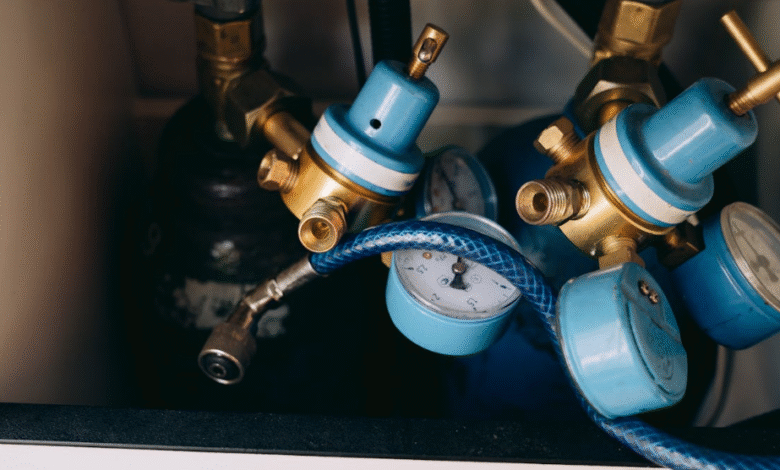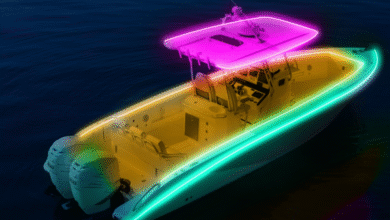Gas Turbine Nozzle Repair: Restoring Efficiency and Extending Turbine Life

Gas turbines are critical to modern power generation, aviation, and industrial operations. Known for their ability to deliver high efficiency, fast response times, and reliable performance, these machines operate under some of the harshest mechanical and thermal conditions. At the core of their performance lies the nozzle—a precision-engineered component that directs high-temperature combustion gases onto turbine blades, enabling energy conversion.
Over time, gas turbine nozzles experience severe wear due to extreme heat, pressure, and chemical exposure. This wear affects performance, fuel efficiency, emissions, and component reliability. To counter these challenges, gas turbine nozzle repair has become an essential practice for power plant operators, airlines, and industrial users worldwide.
This article explores the importance of gas turbine nozzles, the common issues they face, repair methodologies, technological innovations, and the benefits of repair strategies for long-term turbine performance.
The Function of Gas Turbine Nozzles
Gas turbine nozzles, often referred to as nozzle guide vanes (NGVs) or stator vanes, are stationary components located in the turbine section. Their main roles include:
- Directing Hot Gases: Nozzles accelerate and direct the combustion gases at the correct angle onto the rotating turbine blades.
- Energy Conversion: By shaping the gas flow, nozzles convert thermal energy into kinetic energy, enabling efficient turbine operation.
- Temperature Management: Many nozzles include cooling holes and coatings to withstand extreme heat from combustion gases.
- Sealing: Nozzles help maintain pressure differentials and minimize gas leakage between stages.
In essence, nozzles ensure that combustion energy is optimally transferred to the turbine rotor. If nozzle performance degrades, the entire turbine suffers efficiency and reliability losses.
Challenges Faced by Gas Turbine Nozzles
Operating in high-stress environments exposes nozzles to several issues:
1. Thermal Fatigue
Constant exposure to combustion temperatures exceeding 1,200–1,500°C leads to material fatigue, cracking, and warping.
2. Oxidation and Hot Corrosion
Contaminants in fuel and air—such as sulfur, sodium, or vanadium—accelerate corrosion, thinning the material and weakening its structure.
3. Erosion
Particulates like dust, sand, or ash erode nozzle surfaces, especially in turbines operating in desert or industrial environments.
4. Coating Degradation
Protective thermal barrier coatings (TBCs) deteriorate over time, leaving nozzle metals exposed to damage.
5. Blockages
Cooling passages in nozzles may become blocked with deposits, reducing cooling effectiveness and increasing thermal stress.
6. Misalignment and Distortion
High stresses may distort nozzles, affecting steam or gas flow angles, leading to reduced turbine efficiency.
Without timely intervention, these problems can escalate into higher fuel consumption, increased emissions, and even unplanned outages.
See also: Navigating Technology Disruption 3317328879
Importance of Nozzle Repair
Nozzle replacement is expensive and often requires long lead times. Repair strategies offer an effective solution by restoring nozzles to near-original condition at a fraction of the cost.
- Cost Savings: Repairs reduce the need for new component purchases.
- Performance Restoration: Restored nozzles return turbines to peak aerodynamic efficiency.
- Reduced Downtime: Repair turnaround is faster than sourcing new parts.
- Sustainability: Repair minimizes industrial waste and supports greener operations.
- Extended Turbine Life: Prevents damage to downstream turbine stages caused by faulty nozzles.
For both aviation and power plants, nozzle repair is not optional—it is critical for safe, efficient, and cost-effective operations.
Repair Methodologies for Gas Turbine Nozzles
Repairing nozzles is a complex process requiring advanced metallurgy, precision machining, and strict quality assurance. The typical repair cycle includes:
1. Inspection and Assessment
- Visual Examination: Detects cracks, corrosion, or coating loss.
- Non-Destructive Testing (NDT): X-ray, ultrasonic, and dye penetrant testing locate subsurface defects.
- Dimensional Checks: Confirm warping or misalignment.
2. Cleaning and Stripping
Deposits, oxides, and worn coatings are removed using chemical baths, abrasive blasting, or laser cleaning.
3. Crack and Structural Repairs
- Welding and Brazing: High-temperature alloys are used to repair cracks or rebuild worn sections.
- Laser Cladding: Adds precise layers of material to eroded areas.
4. Cooling Passage Restoration
Blocked cooling holes are cleaned or re-drilled to restore thermal management.
5. Coating Application
- Thermal Barrier Coatings (TBCs): Protect against extreme heat.
- Corrosion-Resistant Coatings: Shield metals from chemical attack.
- Erosion-Resistant Coatings: Strengthen surfaces against particulates.
6. Machining and Dimensional Restoration
Restores nozzles to OEM specifications, ensuring correct gas path profiles.
7. Testing and Quality Control
- Flow Testing: Verifies aerodynamic performance.
- Mechanical Testing: Confirms material strength and structural integrity.
- Final Certification: Ensures compliance with industry and OEM standards.
Applications in Power Generation
For gas-fired power plants, nozzle repair is essential to maintaining efficiency and profitability.
- Efficiency Gains: Refurbished nozzles reduce heat rate, lowering fuel costs.
- Reduced Emissions: Optimized nozzles ensure complete combustion and cleaner output.
- Operational Flexibility: Reliable nozzles enable turbines to handle load fluctuations smoothly.
- Extended Service Intervals: Repairs delay the need for major turbine overhauls.
Given the competitive nature of electricity markets, nozzle repair directly contributes to operational and financial success.
Applications in Aviation
In aircraft engines, reliability and safety are non-negotiable. Nozzle repair is critical for ensuring flight safety and efficiency.
- Engine Performance: Maintains optimal thrust-specific fuel consumption.
- Safety Assurance: Prevents nozzle failures that could disrupt gas flow and cause engine stalls.
- Cost Savings: Repair programs extend nozzle life, reducing airline maintenance expenses.
- Regulatory Compliance: Repairs meet strict FAA and EASA standards for airworthiness.
In aviation, nozzle repair is not only about efficiency but also about protecting lives and ensuring trust in global air travel.
Technological Advancements in Nozzle Repair
Modern repair strategies are enhanced by advanced technologies:
- Additive Manufacturing (3D Printing): Used to rebuild damaged nozzle segments with high precision.
- Robotic Welding and Machining: Ensures consistency and accuracy in repairs.
- Advanced Coatings: Nano-structured and ceramic-based coatings improve thermal and corrosion resistance.
- Digital Twin Technology: Simulates nozzle performance and predicts wear, optimizing repair schedules.
- AI-Based Inspection: Improves defect detection and minimizes human error in evaluation.
These innovations are reducing repair times, improving performance, and extending component lifecycles.
The Future of Gas Turbine Nozzle Repair
As turbines evolve to deliver higher efficiency and lower emissions, nozzle repair practices will continue to advance. Key trends include:
- Predictive Maintenance: IoT and AI will enable early fault detection before performance loss occurs.
- On-Site Repair Solutions: Portable laser cladding and 3D printing may allow in-field refurbishment.
- Sustainability Focus: Eco-friendly coatings and recycling practices will minimize environmental impact.
- Integration with Next-Generation Turbines: Repairs will adapt to new materials like ceramic matrix composites (CMCs).
The combination of digital technologies and advanced materials science will shape the next era of nozzle repair.
Conclusion
Gas turbine nozzles are small yet critical components that ensure the efficiency, safety, and reliability of turbines in both power and aviation sectors. Operating in high-temperature, high-stress environments, nozzles inevitably face degradation from erosion, corrosion, cracking, and coating wear.
Through specialized repair processes—inspection, welding, coating, machining, and testing—nozzles can be restored to near-original condition, delivering cost savings, efficiency gains, and extended turbine life. In power plants, nozzle repair ensures reliable electricity production. In aviation, it safeguards safety and performance at 30,000 feet.




